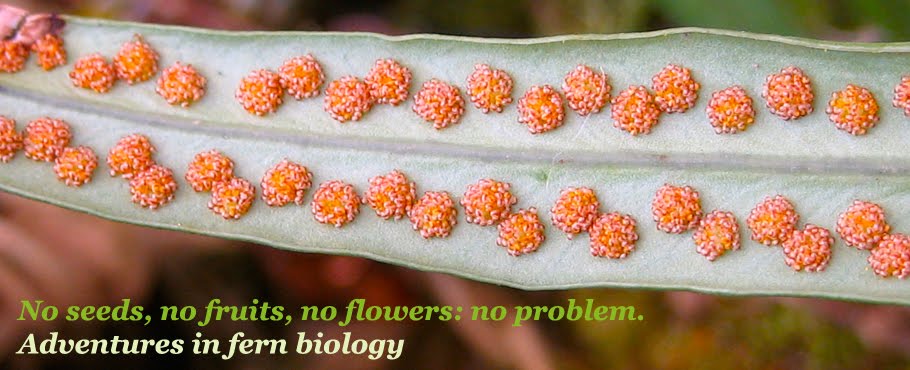My
last post focused on several species of
Myriopteris ferns we found in the Anza Borrego desert region of southern California. In addition, we found a few other species of ferns that also deserve highlighting. These included
Pellaea mucronata, Pentagramma triangularis, and
Adiantum capillus-veneris, all members of the family Pteridaceae (like
Myriopteris).
Adiantum was a particularly pleasant surprise because it is not a particularly desert-adapted fern at all. We found it at the end of a long hike up Hellhole Canyon in Anza Borrego Desert Park, at the very aptly named Maidenhair Falls. Clearly the ferns survive in that location thanks to the waterfall!
 |
| Pellaea mucronata |
 |
| Pellaea mucronata and Myriopteris viscida |
 |
| Pentagramma triangularis |
 |
| Pentagramma triangularis |
 |
| Adiantum capillus-veneris |
 |
| Adiantum capillus-veneris |
Last but not least, we found a signature desert lycophyte,
Selaginella eremophila. This one is nice and green, probably thanks to some recent rains that brought it back to life. Many
Selaginella species are resurrection plants, able to dry out completely and rehydrate quickly when water becomes available again. Most of the ones we saw were brown and crispy; this one was a lucky find. I previously blogged about
Selaginella and their resurrection abilities
here.
 |
| Selaginella eremophila |






















